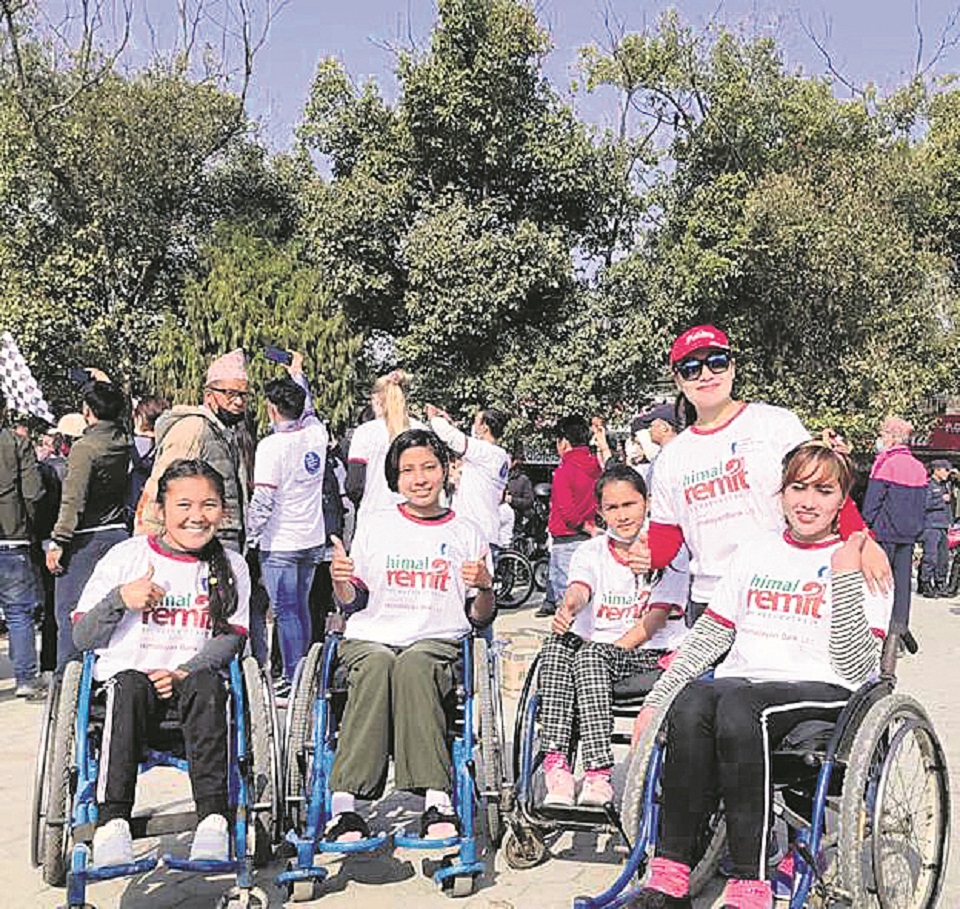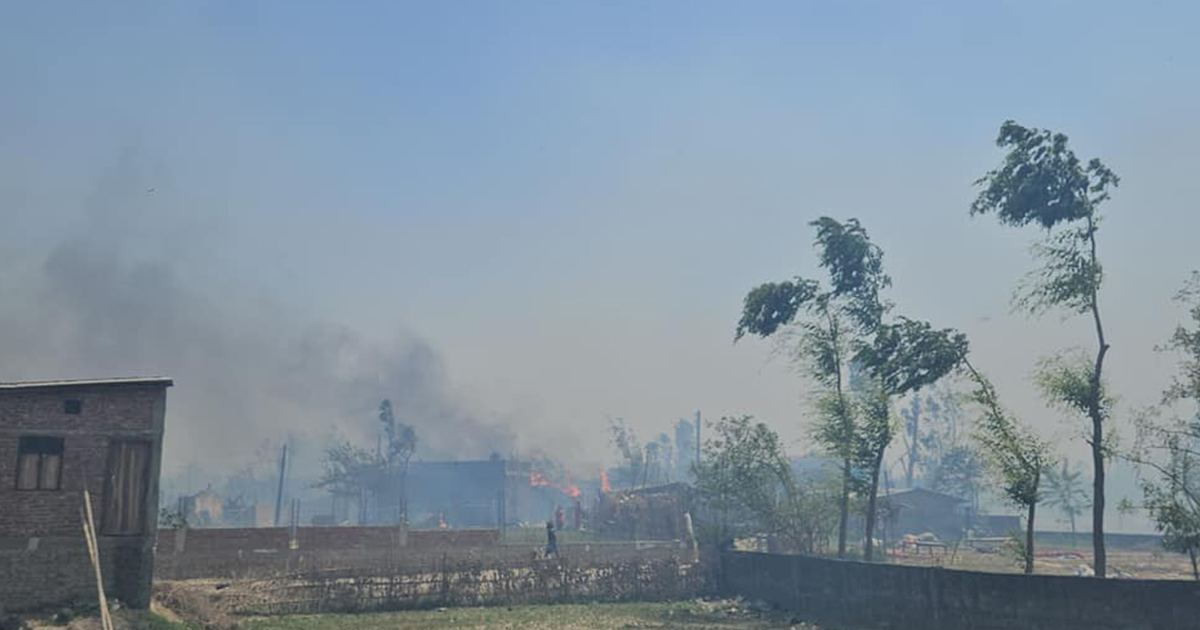
OR


Simone Galimberti
Simone Galimberti is the Co-Founder of ENGAGE, an NGO partnering with youths to promote social inclusion in Nepal.simone_engage@yahoo.com
Imagine you have to navigate the streets of your town, every single day, including getting out of your home on wheelchair. How will you cope with the challenges?
Let me start with a little exercise in imagination and think of a scenario that could happen to everybody, given the disproportionately high number of accidents happening in the national roads. Following a really bad spinal injury you are now bound in a wheelchair. You are lucky that the country has some good rehabilitation institutions like the Spinal Cord Rehabilitation Center (SIRC) funded by the civil society activist and intellectual Kanak Mani Dixit.
Still your life has changed and after months of intensive therapy and care and psychological roller-coaster, you are now trying to get your life back on track, through a wheelchair. You have to navigate the streets of your town, every single day, including getting out of your home. How do you think you would cope?
Let’s stretch our imagination a bit further. You are now approaching your office for the first time after the injury, but suddenly you realize that the entry has no ramp and the three steps that have been always overlooked as almost invisible now represent a challenge like an Everest expedition.
If we all think a bit about what it is like living in a wheelchair, perhaps we should one day try what it really means, literally: jump on one wheelchair and spend one hour trying to go around the streets of your neighborhood and soon you will discover how challenging it is going to be.
There is a huge need to improve our urban spaces in order to allow persons living with disabilities who are in a wheelchair to fully exercise their constitutional rights: living a life in dignity, full employment, quality inclusive education, quality health care and so on. The list is long and unfortunately so far pretty empty in terms of implementation, in terms of shifting from words to deeds.
It is a common problem I know and it is a common frustration dealing with the lack of leadership and personal accountability among the key stakeholders. But instead of blaming the big shots, perhaps each of us can start empathizing and understanding more of the plights faced by those living in a wheelchair.
The International Wheelchair Day, observed on March 1 each year, represents a first step in that direction. It is a new “celebration”, not yet officially sanctioned by the United Nations, not yet but surely one day it will.
It has been an idea of Steve Wilkinson often referred as “Wheechair Steve” from the United Kingdom and since its inception back in 2008, awareness on the International Wheelchair Day has been growing all over the world and we should all be proud of having Nepal as one of the most enthusiastic supporters of the day.
Therefore it should not be surprised that, last Sunday, hundreds of citizens with and without wheelchair gathered in the core of Kathmandu for a rally and a discussion program at the presence of Honorable Minister Parbat Gurung and other dignitaries, including Kanak Mani Dixit and team with SIRC that, since the outset, have been taking the lead to organize the event.
An international celebration, a rally in the city center is just the beginning of a journey that has already achieved several milestones in a country like Nepal, including, some years back, the enactment of a new disability law. And yet as always there are problems to shift the gear and move in action.
In the country, not only in the federal capital but throughout the entire nation, there are literally thousands of social purpose organizations, mostly not-for-profits, who are mostly run by passionate persons living with disabilities under the slogan “Nothing about me without me”.
At the same time there are committed citizens without disabilities engaged in the disability rights movement proving that it is not just a matter of a neglected minority but actually a theme that affects most of us.
Do not forget the little exercise in imagination at the beginning of this article.
In order to change the status quo, making the country fully inclusive for persons living with disabilities and other neglected minorities, we need to ask ourselves few questions: How can we generate, among the public, more interest about disabilities? How can we create more bridges and coalitions, especially among the youths, building on the existing foundations where sensitive citizens without disabilities have already joined the cause because they care? How can we ensure that legal provisions already in place are fully enforced?
If a law is enacted, it should be put into practice. End of the story. For this to happen, we need a systematic and gigantic organizational build up, consisting of court litigation, massive campaigning in the schools across the country, more solid media coverage of positive stories related to the many and yet neglected “achievers” among citizens living with disabilities and more investments into adaptive sports that offer a great way to connect with the general public.
We also need to connect the dots, perhaps, creating an annual plan with the major initiatives in the field of disabilities, with the International Day of Persons with Disability as final crowning event at the end of the year.
Persons with and without disabilities could come together not only for International Wheelchair Day or International White Cane Safety Day but also to champion other causes. Doing networking and partnerships in Nepal is not easy. I am well aware of the hardships of shifting from clicks of a computer where I am writing this column to the logistical, funding and compliance nightmares surrounding the disability and the social sector in general.
As many know, a higher and higher number of not-for-profits are struggling because of a compliance system more and more challenging. Perhaps the only way forward would be having more collaborations, partnerships and even mergers among likeminded organizations. It is going to be complex but perhaps inevitable and probably good for the sector, with more efficiency, more scale and more professionalism. Equally important, we need the private sector in a big way.
Himal Remit, one of the major remittance companies in the country, backed the International Wheelchair Day. This is a good example but much more is needed. The government at federal level should also step in to create an environment where private companies have incentives, for example, in hiring persons living with disabilities.
Comparing Nepal with Singapore may not be right but the island nation in its 2020 budget has offered a wealth of facilities, including a national fund, to support companies in hiring persons living with disabilities. Singapore can be an inspiration for Nepal in this regard.
We all know that often the problems impeding the development of the nation are not related to lack of financial resources nor it is about lack of know-how and expertise. It is about greed, power play and lack of willpower. Persons living with disabilities can contribute to the development of the nation and take charge, provided some opportunities are offered to them.
Engaging the governments at all levels will remain a priority together with starting a serious conversation with the major business houses and the youths of the nation. Let’s set aside our egos and let’s plan holistically through real partnerships, building on the success story of International Wheelchair Day 2020.
The author is Co-Founder of ENGAGE, an NGO partnering with youths living with disabilities.
You May Like This

Community-Police Partnership campaign launched
KATHMANDU, Oct 29: Nepal Police on Sunday launched a Community-Police Partnership campaign emphasizing the need for bolstering a partnership between the... Read More...

Preparations to produce traffic teachers in schools to cap road accidents
NAWALPARASI, Sept 11: The local authorities here are preparing to set up one traffic teacher for every school in view... Read More...

Four killed in road accidents
KATHMANDU, Oct 4: Two persons died in a road accident after a bus, Lu 1 Kha 1208 hit a bike,... Read More...





Just In
- World Malaria Day: Foreign returnees more susceptible to the vector-borne disease
- MoEST seeks EC’s help in identifying teachers linked to political parties
- 70 community and national forests affected by fire in Parbat till Wednesday
- NEPSE loses 3.24 points, while daily turnover inclines to Rs 2.36 billion
- Pak Embassy awards scholarships to 180 Nepali students
- President Paudel approves mobilization of army personnel for by-elections security
- Bhajang and Ilam by-elections: 69 polling stations classified as ‘highly sensitive’
- Karnali CM Kandel secures vote of confidence














Leave A Comment